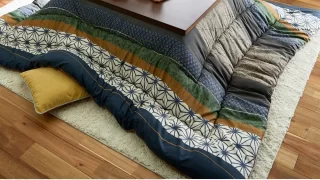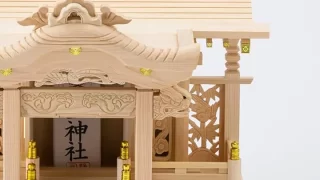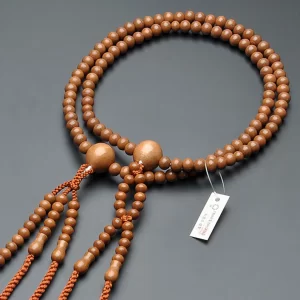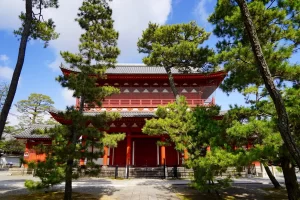What is the Tendai sect of Buddhism?
A sect of Buddhism founded by Tendaidaishi Chigi in Tiantai County, Zhejiang Province, China during the Sui dynasty. Around 800 AD, Saicho brought it back from Tang and spread it to Japan.
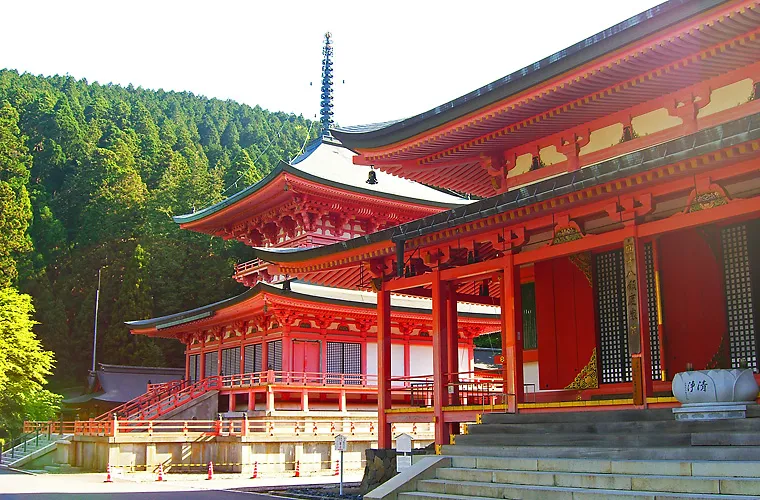
Contents
Tendai sect spread in Japan by Saicho
It is like a university in the Buddhist world that encompasses various teachings.
At first, it was a new Buddhism that was introduced to separate politics from ancient Buddhism, but the teaching that anyone can become a Buddha has permeated the people, and even today many followers of the sect believe in it.
The Tendai sect was established by Saicho and his disciple Ennin, and from the end of the Heian period to the beginning of the Kamakura period, the founders of each sect studied on Mt. Hiei and developed Japanese Buddhism.
After that, Nobunaga Oda set fire to Enryakuji Temple on Mt. However, since Tenkai, a close aide of Ieyasu Tokugawa, was a monk of the Tendai sect, it regained momentum in the Edo period.
The fact that there are still many temples of the Tendai sect in the Kanto region is probably related to the sect that Ieyasu believed in.
Teachings of the Tendai sect and their characteristics
The Tendai sect preaches the teaching of the Lotus Ichijo, which enables all people to become Buddhas. "Vehicle" means a vehicle, and it means that the deceased will be led to the world of Buddha by one vehicle regardless of their status.
In addition to the teachings of Tendai, Saicho also spread to Japan the three sects of Mitsu, Zen, and Precepts, which share the same teachings.
As a result, the Tendai sect was established as a comprehensive Buddhism.
After that, the founders of each sect such as Honen, Shinran, and Nichiren studied the Tendai sect, so it is also called the mother mountain of Buddhism.
The Tendai Sect stipulates, ``The Tendai Sect fuses and practices Engyo, Esoteric Buddhism, Zen Buddhism, Precepts, Nembutsu, etc., all with the teachings of the Hokke Ichijo, based on the principles disclosed by the founder of the sect, Daishi Rikkyo.''
The Tendai sect, which fuses various teachings in this way, is characterized by the fact that each temple has its own principal image, such as Shaka Nyorai, Dainichi Nyorai, Amida Nyorai, and Yakushi Nyorai.
Words chanted by Buddhist monks
Officially, it is 'namushusokompondengyodaishifukujukongo'.
However, it seems that they often chant "Namu Amida Butsu".
Major temples of the Tendai sect and the present
Major temples of the Tendai sect and the present
Hieizan Enryakuji Temple (Otsu City, Shiga Prefecture)
It is the head temple of Tendai Buddhism and is registered as a World Heritage Site. Saicho trained on Mt. Hiei even before he crossed over to Tang, and in 788, he built the Ichijoshikan-in Temple and made it the main training hall. This is the Konponchudo, the largest Buddhist hall in Enryakuji.
Chusonji Temple (Hiraizumi Town, Iwate Prefecture)
It was opened in the 3rd year of Kasho (850) by Jikaku Daishi Ennin of Hieizan Enryakuji Temple. Later, at the end of the Heian period, over 40 temples and pagodas were constructed by Kiyohira Fujiwara, the founder of the Oshu Fujiwara clan. Among them, Konjikido, the first national treasure building, is a symbol of Hiraizumi's gold culture.
San zen in Temple (Ohara, Kyoto City)
Sanzen-in Temple, one of the three monzeki temples that represent the Tendai sect, is said to have originated from the Enyu-bo temple built by Saicho in the south valley of Hieizan East Pagoda. After moving several times, it was moved to its current location in the Meiji era and has become popular with its current name.
Rinnoji Temple (Nikko City, Tochigi Prefecture)
Mt. Nikko was founded in the Nara period. In the Edo period, the Toshogu Shrine, which enshrines Tokugawa Ieyasu, and the Taiyuin Mausoleum of the third shogun, Tokugawa Iemitsu, were also built. Tenkai, the high priest of the Tendai sect, who was greatly trusted by Ieyasu, valued Feng Shui and the Hokushin Hokuto faith. Edo Castle is said to have been developed under the guidance of Tenkai.


